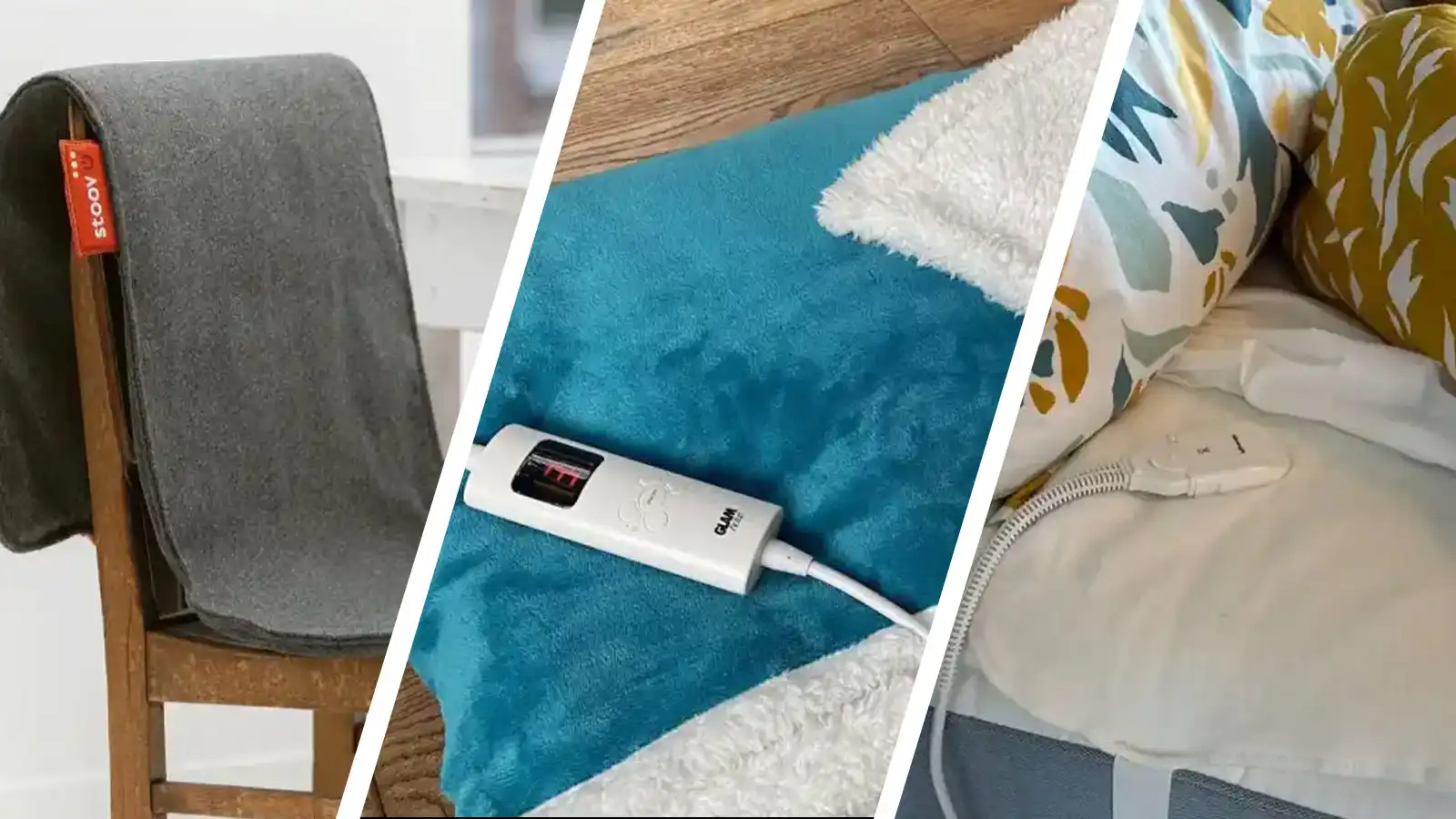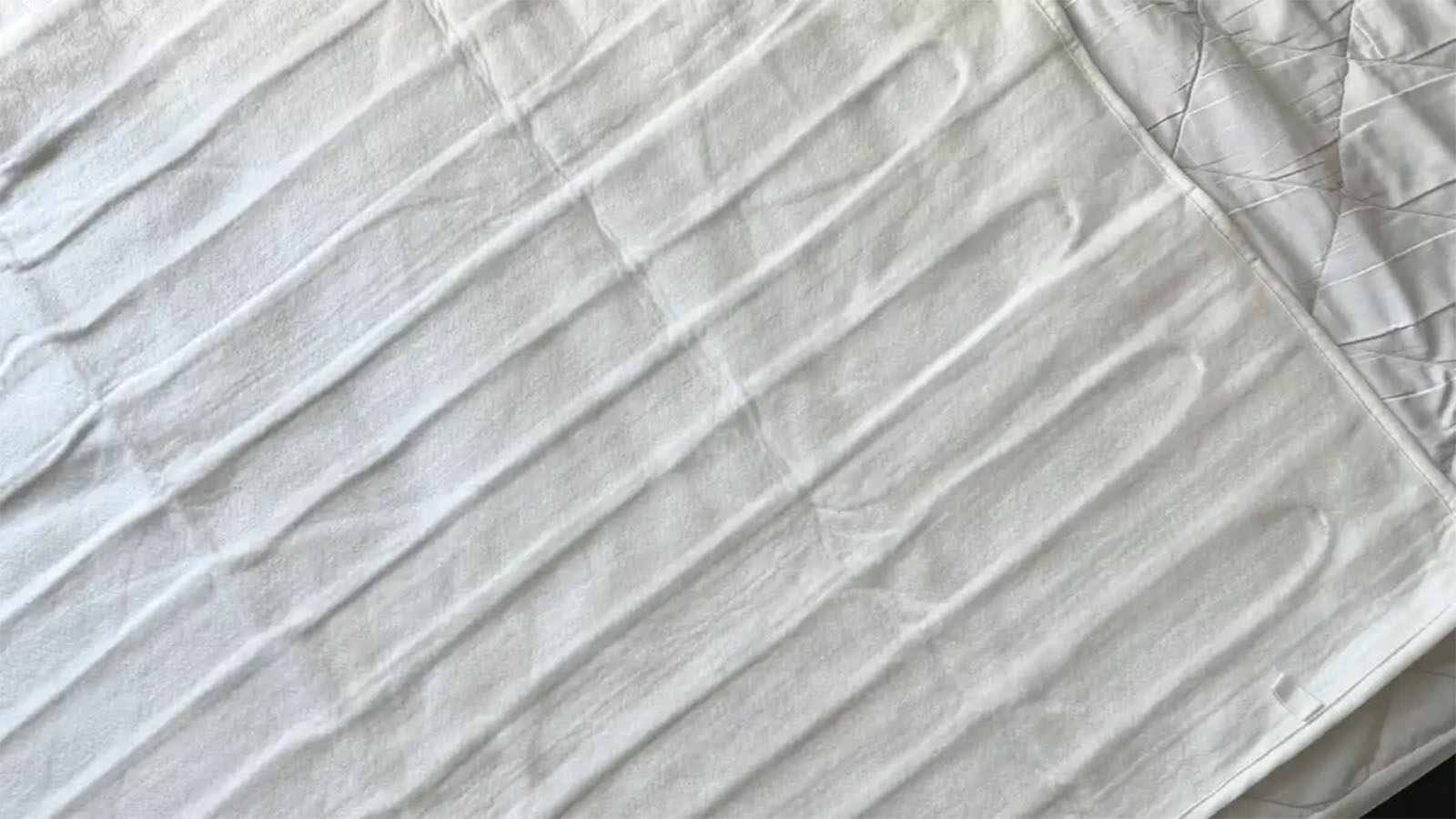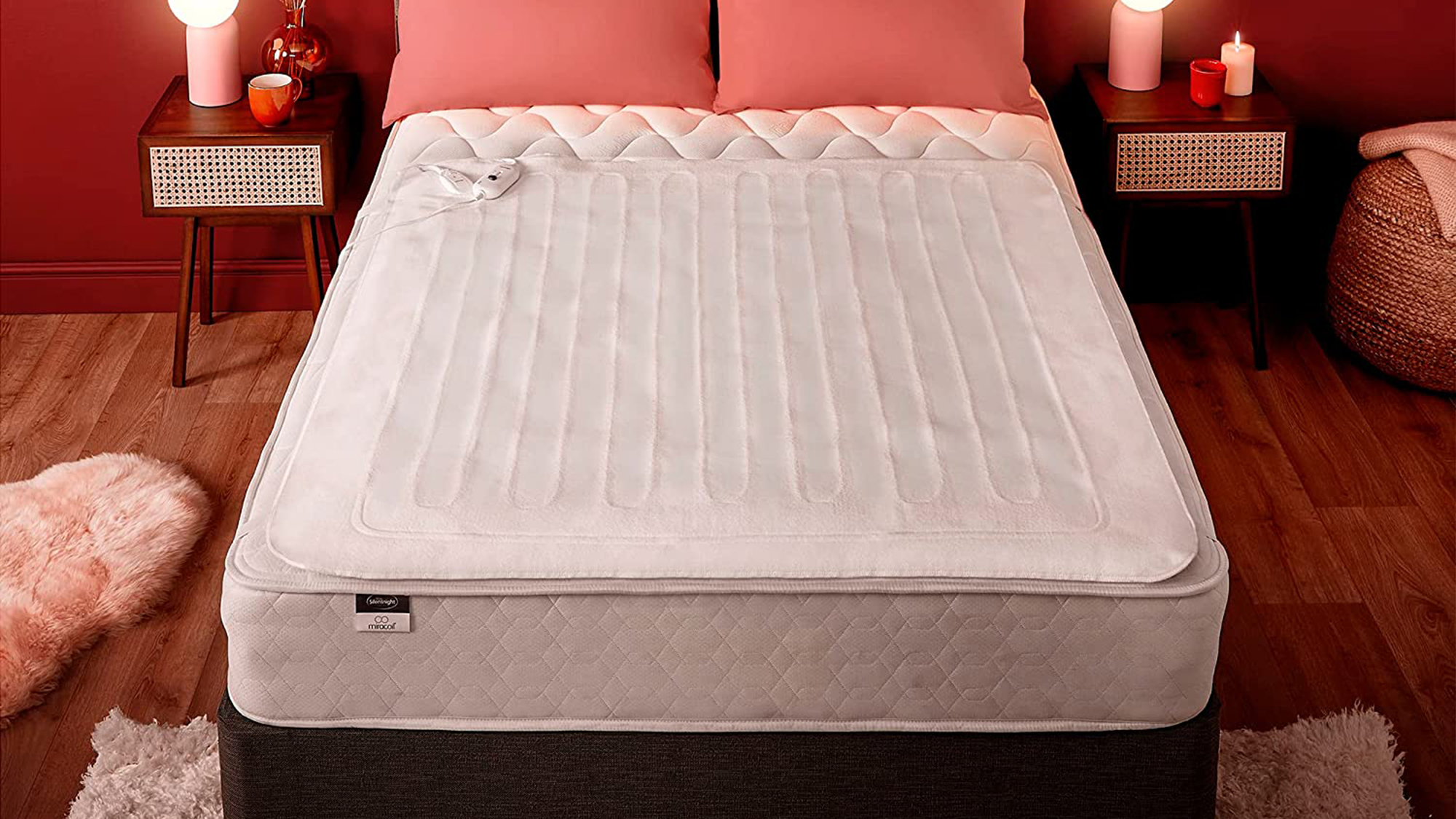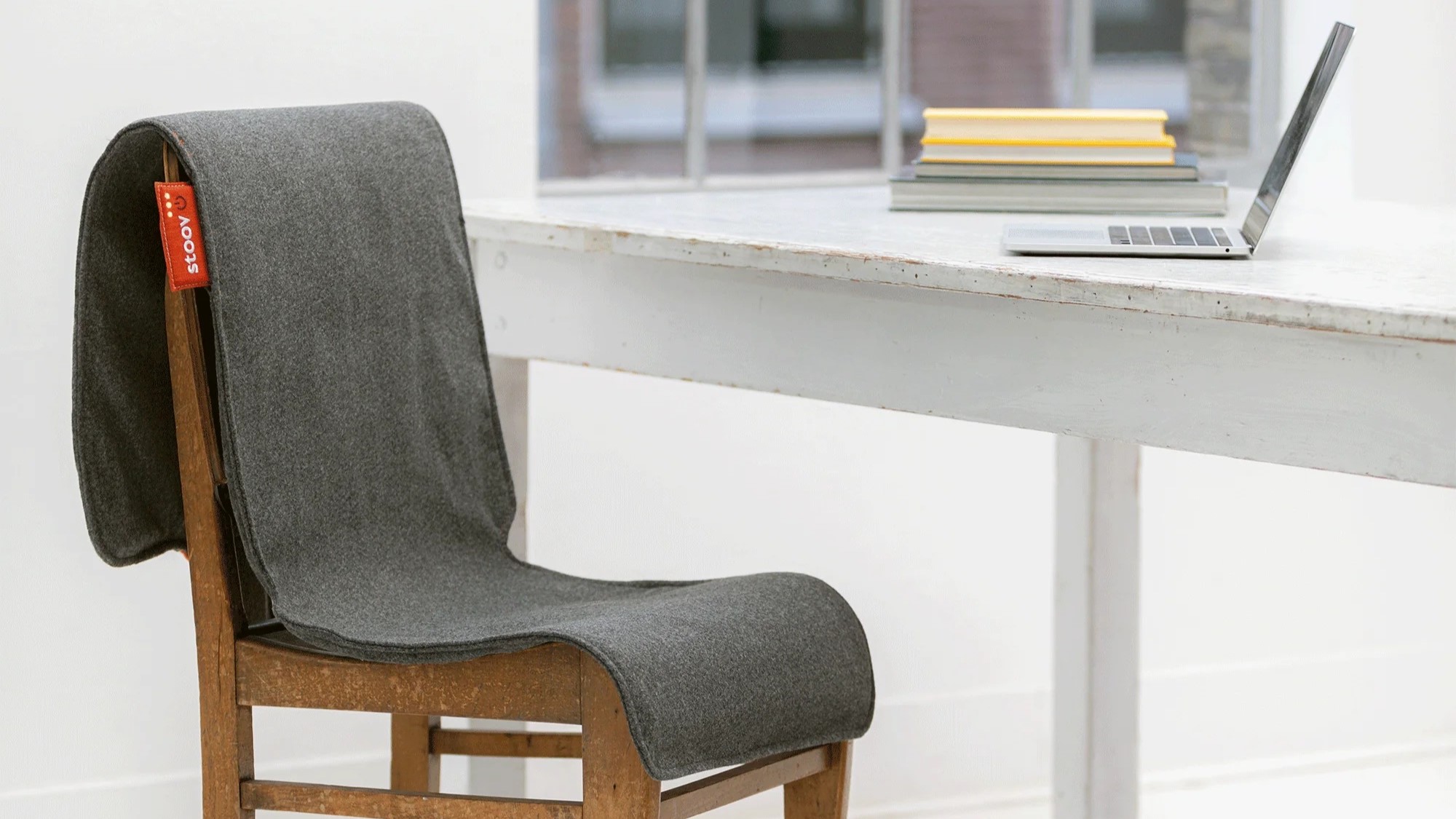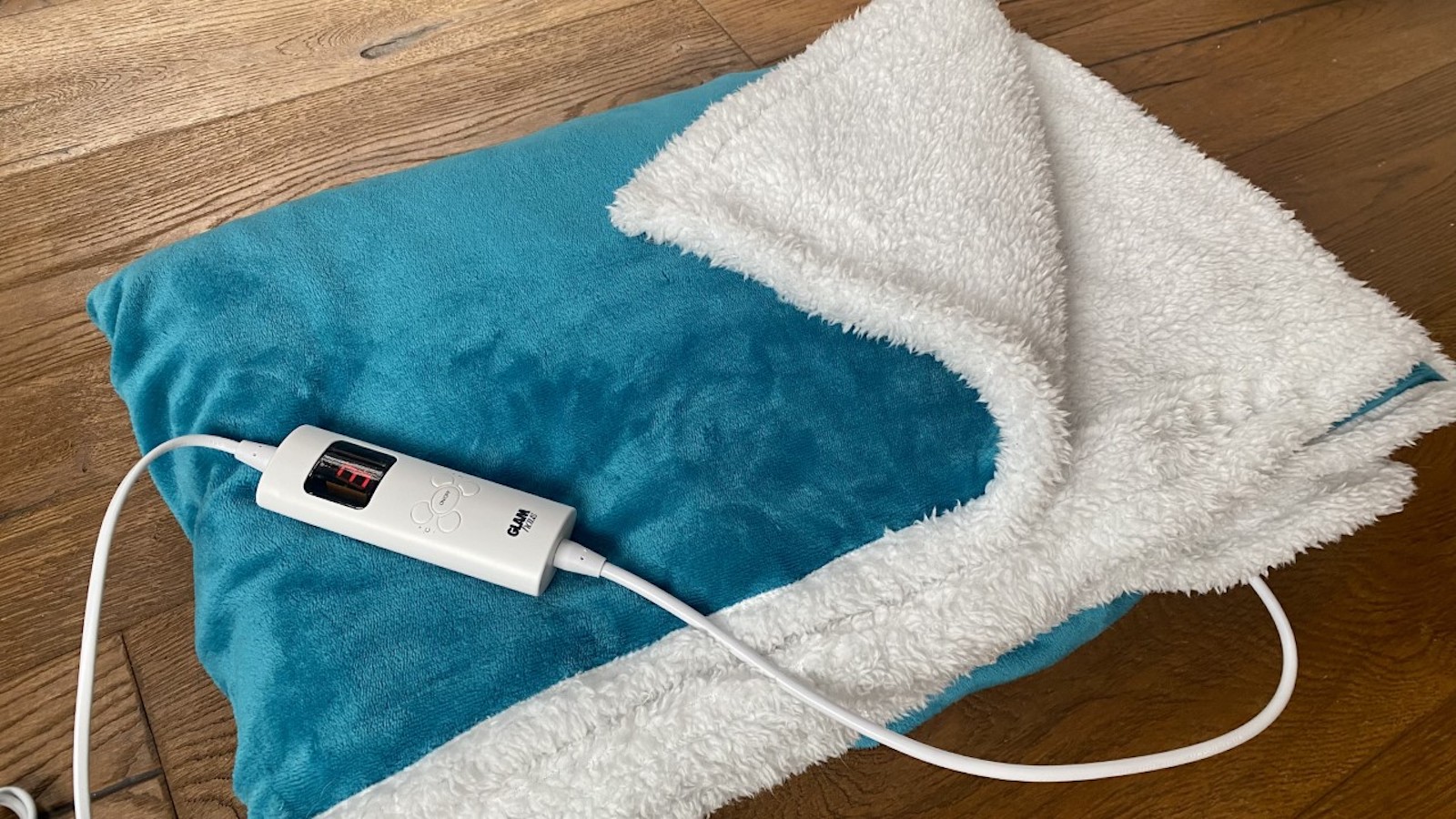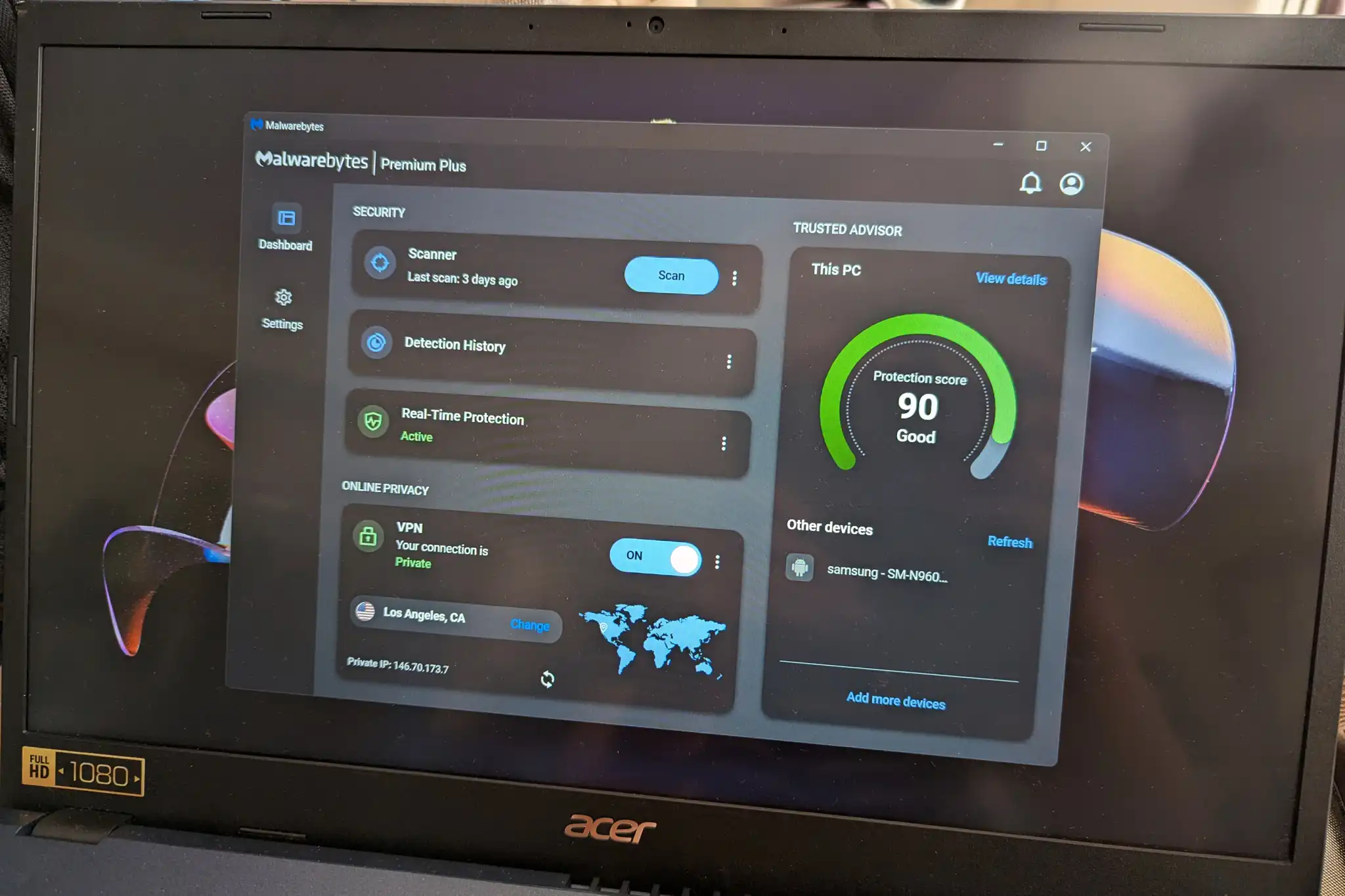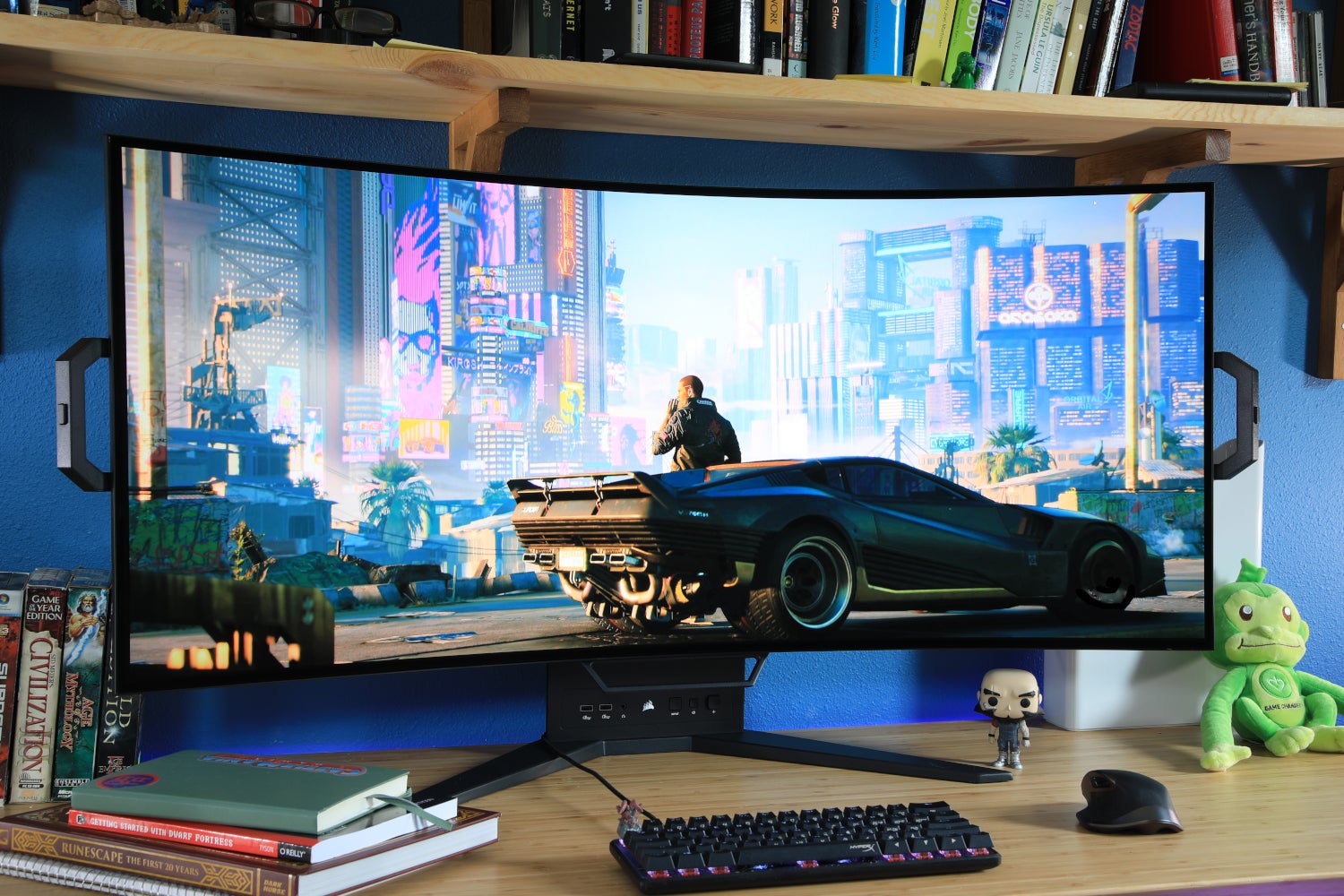It’s that time of year when you’re probably starting to pack up your swimwear and dust off your winter coats. A small investment in a heated blanket now – before prices rise in the coldest months – could help you stay warm and save money until spring. But don’t buy an electric blanket before you read our guide. We’ve got tips and advice that will ensure you don’t waste money on the wrong one.
Which type of electric blanket should you buy?
There are two widely available types of electric blanket.
The first type, which is more common in the UK, is an under blanket. Most under blankets are for use in bed and they’ll help you get a better night’s sleep in a cold room. The under blanket goes over your mattress or mattress topper and you sleep on top of it. Inside the blanket are wires that radiate heat.
You’ll be able to feel the wires underneath you, but not to the extent that this should disturb your sleep. These blankets tend to be made of a fleecy fabric that’s warm and cushioning.
We’ve also reviewed an under blanket that’s designed to heat your chair while you’re working or relaxing: the Stoov Big Hug XL. Under blankets of this kind are less common.
The second type of electric blanket is a throw you can pull over you when you’re relaxing on a sofa, chair or bed. These tend to be much like any throw you’d get for a sofa – tactile and fuzzy. The only difference is that there’s a matrix of wires throughout.
Both types of blanket have a control panel midway down the cable. Typically, they’ll have different heat settings and a timer feature, so they’ll automatically switch off once you fall asleep.

Lewis Painter / Foundry
Both types of blanket can be cleaned in a washing machine.
What to know before you buy an electric under blanket
For more specific product information about under blankets for bed, have a look at our reviews of the Cosi Home electric blanket and the Silentnight Comfort Control electric blanket.
From our testing, these are the specific features to look out for:
Controllers and dual controllers: If you’re buying an electric blanket for a double bed, having dual controls is ideal, so you and your partner can individually choose the perfect heat setting for your side. Dual controllers are a feature only available on pricier blankets.
How it fastens to your bed: Some electric blankets have a strap you need to feed right under the mattress to secure, others have elastic corner straps. The latter make it much easier to attach and remove for washing.
Settings: Really, the more heat setting options, the better. This will allow you to find the sweet spot between making no difference whatsoever and roasting you like a turkey.
Timer: Most blankets will have a timer that’ll let you set it so the blanket switches off after a certain number of hours. It’s a useful feature and you should make sure that the one you buy has it.
Size: When we reviewed electric blankets, the same issue came up repeatedly. Electric blankets don’t cover the entire bed. Essentially, they’re heating pads that just cover the area where you lie. But our reviewers found that this created two problems: discomfort from cold heads and toes, and the fact that the blanket’s hard, plastic connector was in the sleeping area – and is obviously uncomfortable to lie on.
We should caution you that your electric blanket should not hang over the side of your bed: it needs to lie flat or the wires inside may be damaged. But if you measure the size of your mattress and the size of the blanket you want, you may find you can safely size up.
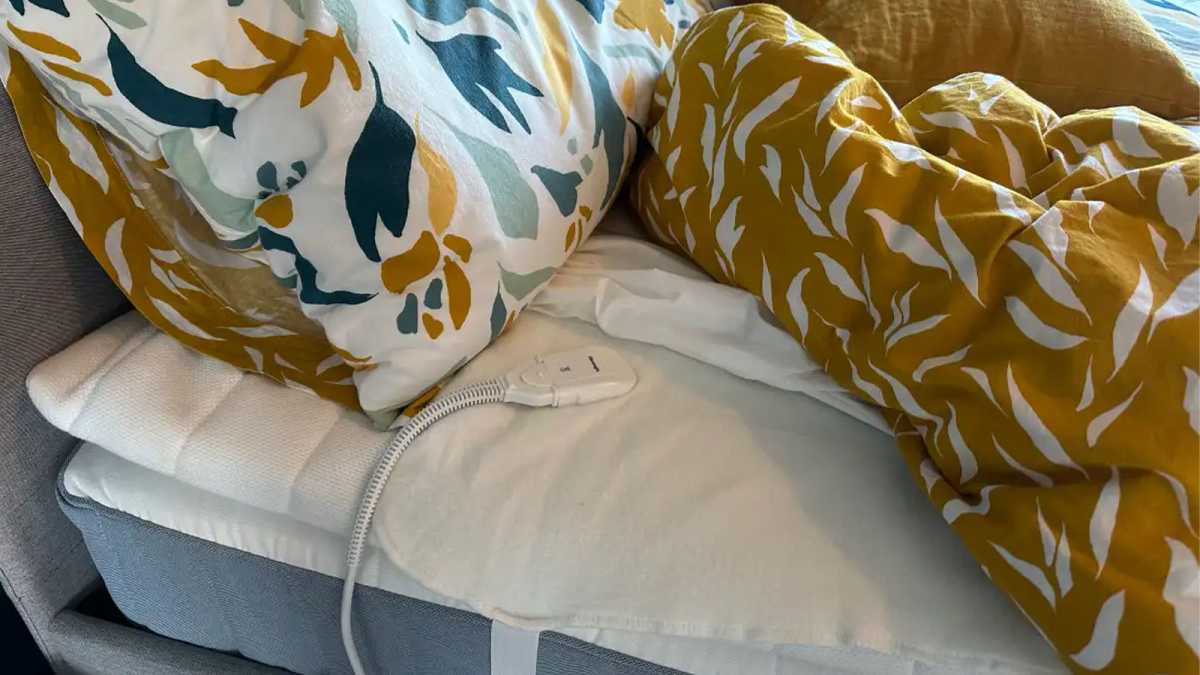
Henry Burrell / Foundry
Connector size and placement: Your electric blanket will be connected to a cable with a plug on the end. But, as we mentioned above, the connector may be in your sleeping area, so the best electric blanket to sleep on will have a connector that’s flat and close to the edge of the blanket.
Safety features: The key safety feature you need is overheat protection. If the blanket gets too hot, it’ll switch itself off. Most electric blankets will offer this feature, and you should ensure that the one you buy does.
Temperature sensor: Some pricier electric blankets may have a room temperature sensor that’ll allow it to automatically adjust its heat setting.
But if it’s the chair in your home office you want to warm up, you might want to consider the Stoov Big Hug XL. It’s a heated under blanket that covers your chair. It feels a lot like sitting on a heated car seat. It’s especially useful if you’re working from home and are sitting still for long periods.
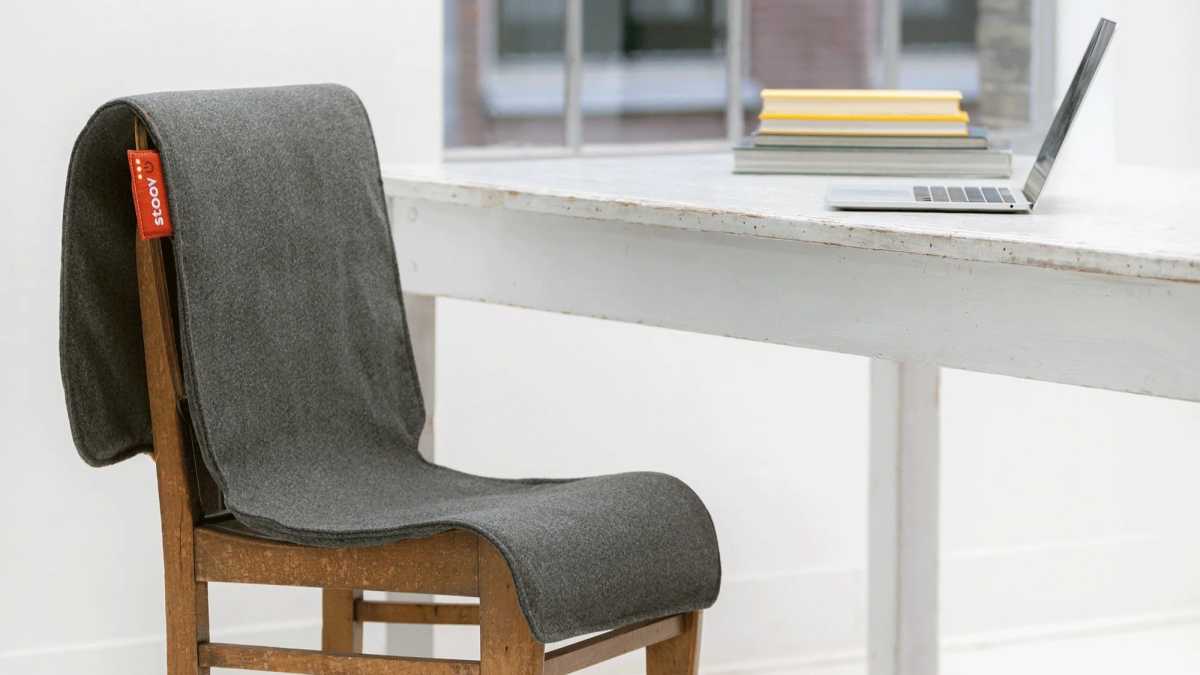
Stoov
One of the Stoov’s best features is that it’s powered by a rechargeable battery, so you don’t need to have it plugged in to use it – and you can use it anywhere you like.
What to consider before you buy a throw
Buying an electric throw is a much simpler and less technical proposition. Beyond measuring its size and considering how durable the fabric is, the key things to look out for are:
- Timer
- Heat settings
- Overheat protection
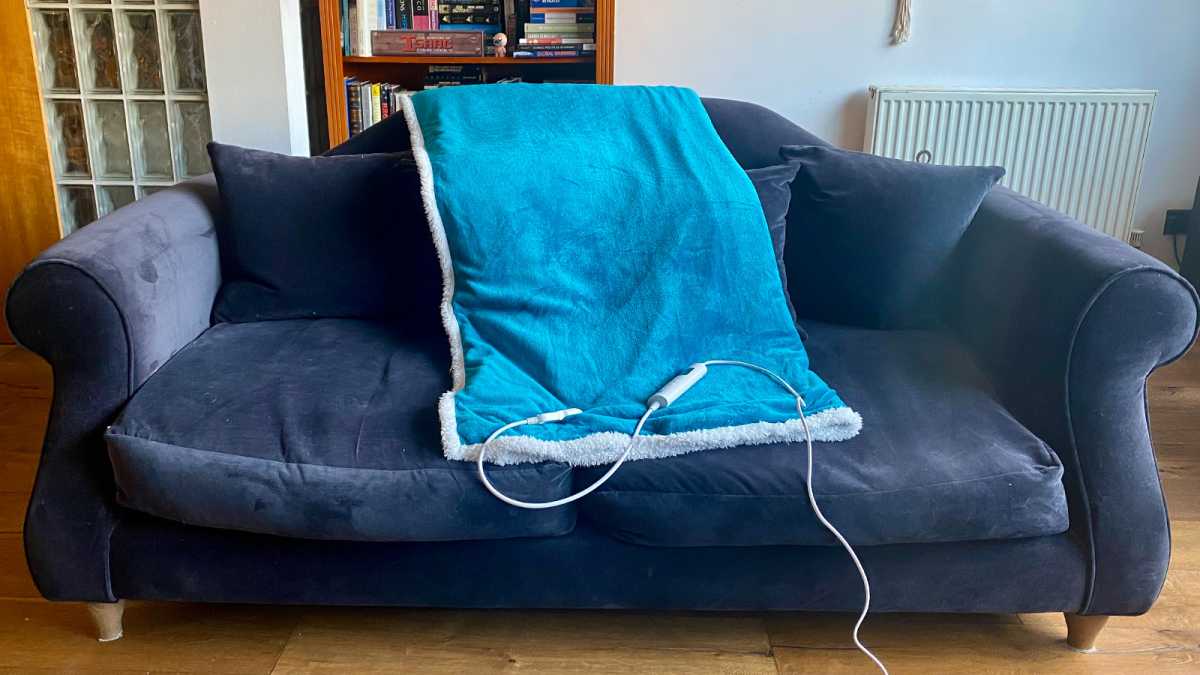
Emma Rowley / Foundry
You can read our review of the Glamhaus heated throw, which is a cosy, effective and budget-friendly option.
Are electric blankets safe?
Years ago, electric blankets had a poor reputation for safety. But that’s no longer the case. As we mentioned, you should look out for overheat protection. But as long as you buy an electric blanket from a reputable retailer and follow its care instructions, it will be perfectly safe to use.
When using your blanket, make sure that it is flat and that the wires inside aren’t snarled up or pressed together. Don’t cover your electric blanket when it’s in use.
Most electric blankets are safe to put in the washing machine on a cool wash. Very few can be tumble dried – and we wouldn’t recommend it. Hang or lay it flat to dry but if you’re pegging it to a line, make sure you avoid pinching the wires inside. Never switch on the blanket in an attempt to dry it more quickly and don’t use it until it’s perfectly dry.
When you’re putting your blanket away, roll it up so that the wires don’t crease.
Make sure that you check it regularly for fraying or any signs of damage.
How much money can an electric blanket save?
If you’re trying not to run up your electricity bill, an electric blanket is the cheapest way to stay warm. Even once you’ve factored in the cost of buying one in the first place, you’ll still save money if you switch on your blanket instead of turning on your central heating or switching on a plug-in heater.
An average electric blanket costs about 1p an hour to run. An average plug-in heater costs around 33p an hour to run. And your gas central heating will cost from around £1.68 per hour to £4+ per hour, depending on whether your home is a smaller flat or a larger house.
You can check for yourself. If you want to find out how much a heated blanket – or any plug-in appliance – costs to run, we’ve got an explainer that’ll help you do it step-by-step. But as a quick guide, here’s what to do.
- Find out the blanket’s wattage.
- Find an online calculator like this one from Sust-It and input the wattage of the blanket and set the time in use to 60 minutes. If you know your tariff, add that, or choose one of the options from the drop-down menu.
- Or you can calculate by hand, in which case multiply your usage per kWh, then multiply that by your electricity unit rate. To get your kWh figure: watts x usage / 1000. Then: kWh x unit rate.
A plug-in heater, for example, will probably be around 1,000-2,000W. So, if you were using a 1,500W heater for an hour and your unit rate is 22p (which is average for the UK now), the heater will cost you 33p an hour to run.
How much does an electric blanket cost?
Electric blankets typically cost from around £40 upwards. At this price, you’ll get an under blanket for a single bed, with simple controls and basic features. From around £100, you can get a double under blanket with dual controls.
Throws cost from around £50 upwards and there’s a wide variety of fleeces and velvety textures to choose form.
If you need more heat than an electric blanket can provide, have a look at our round-up of the best plug-in and portable heaters.
And if you want to know when it’s cheaper to use a plug-in heater or when to switch on your central heating, have a look at our gas or plug-in heater explainer, which will help you to work it out.

